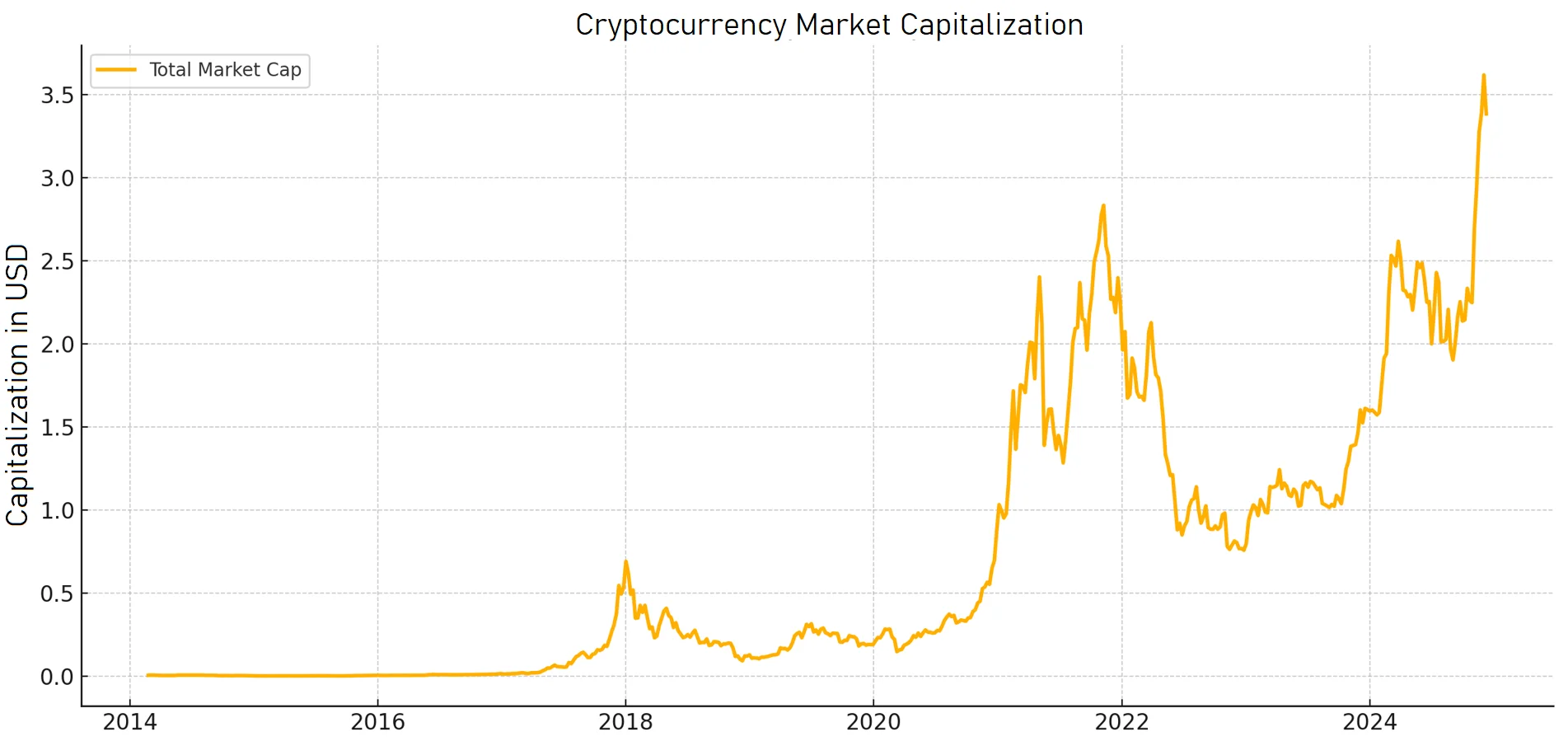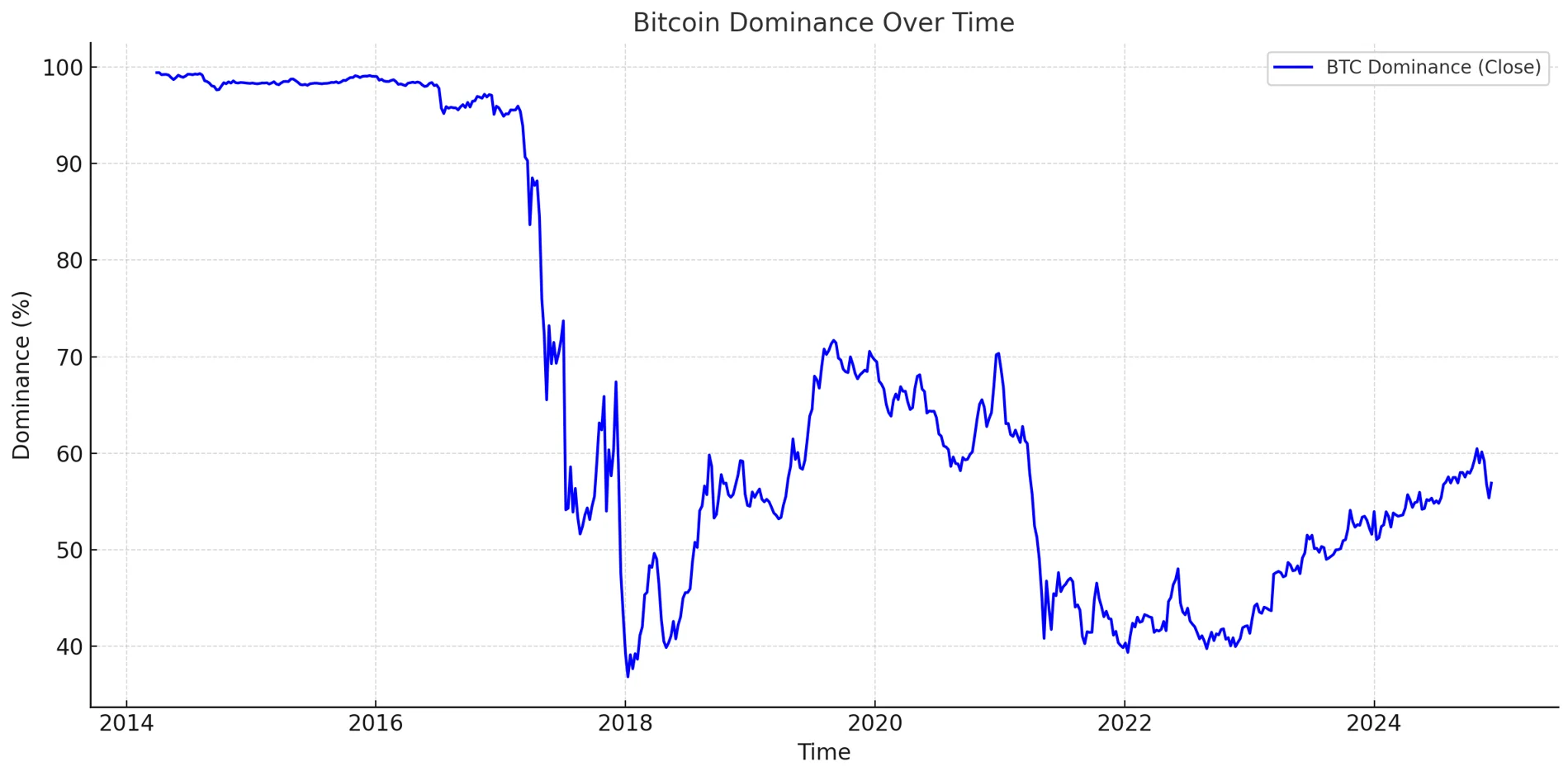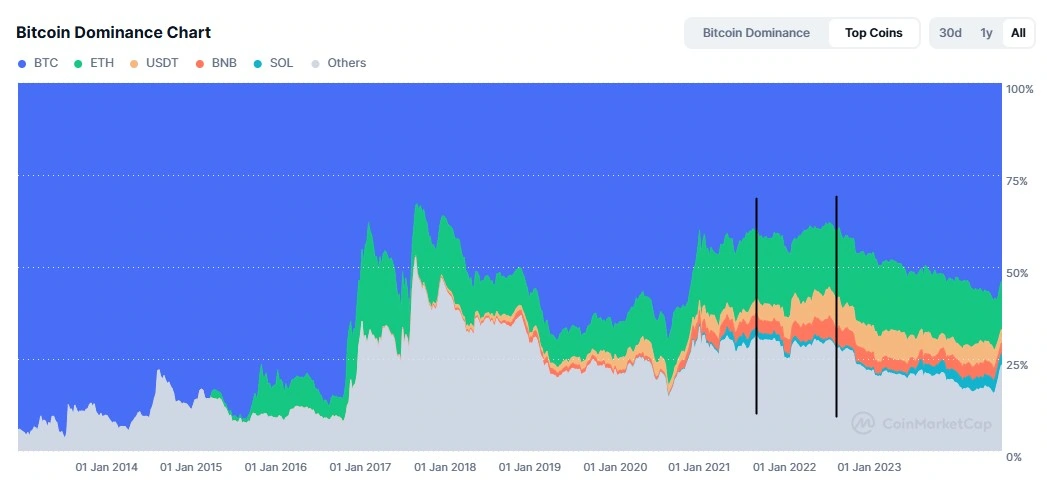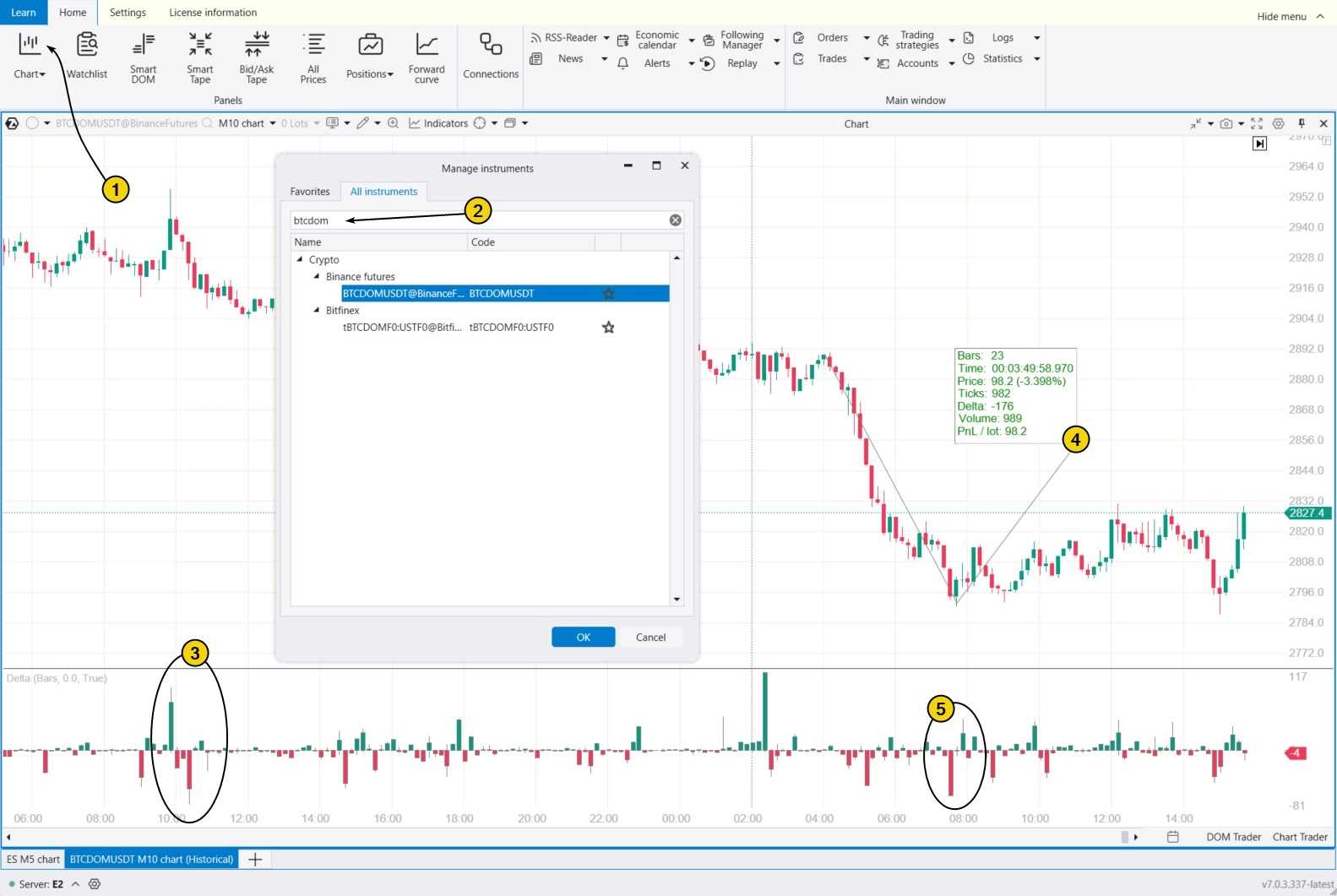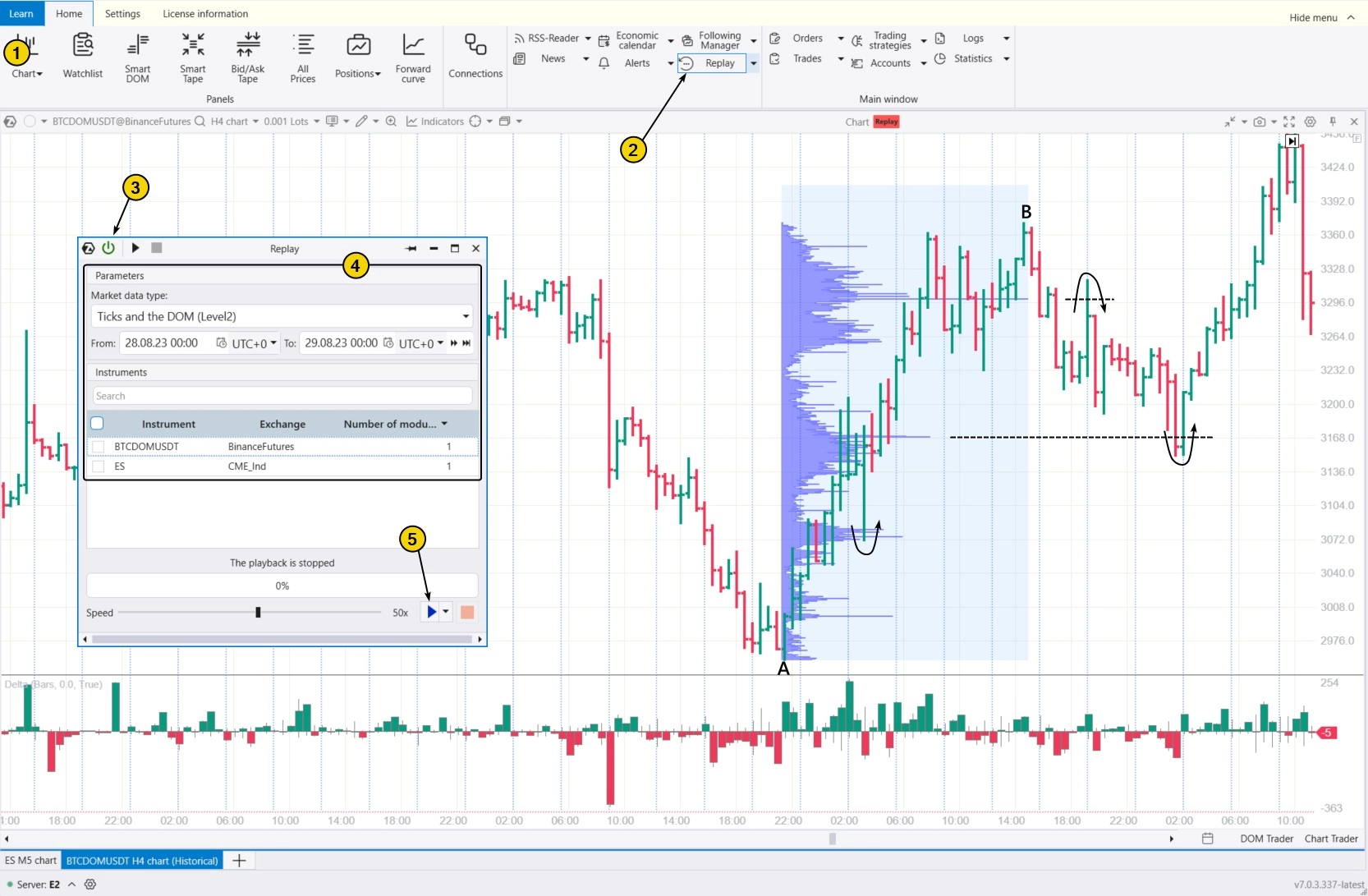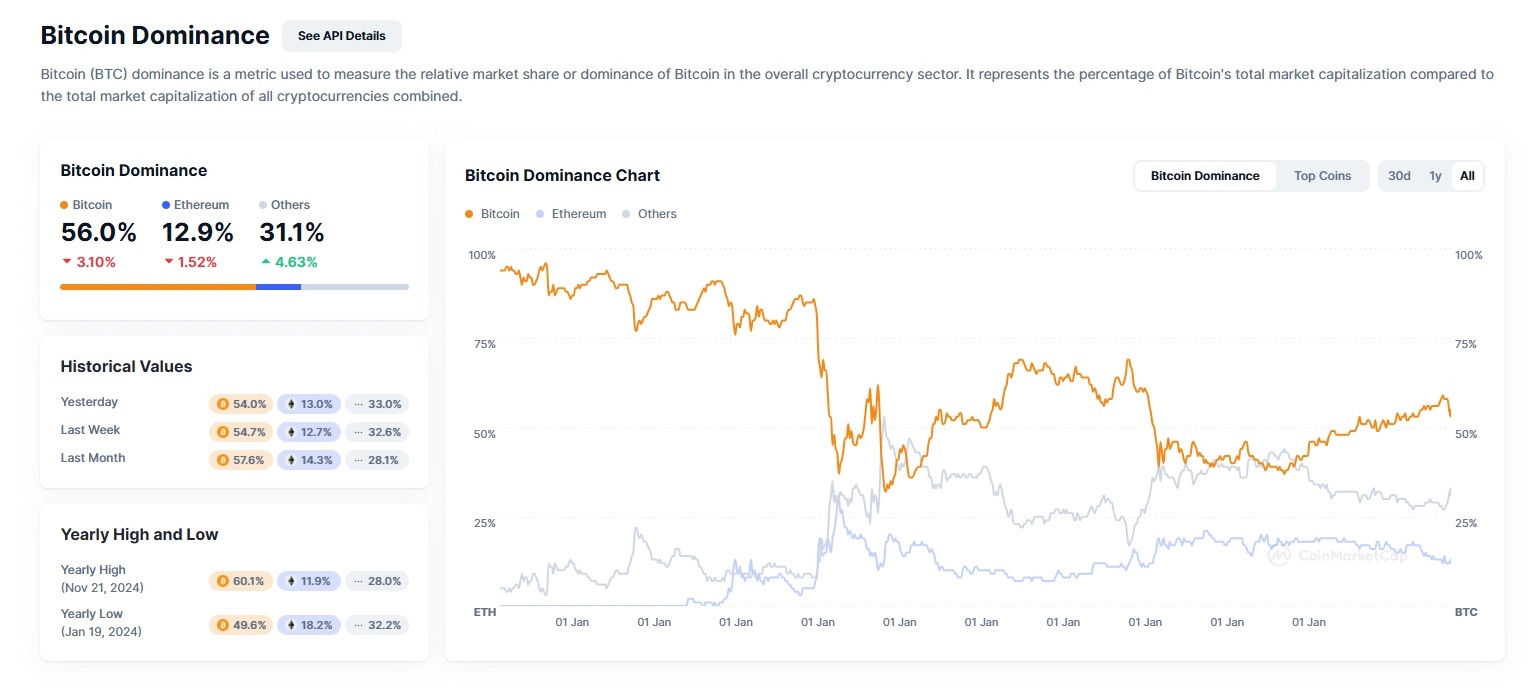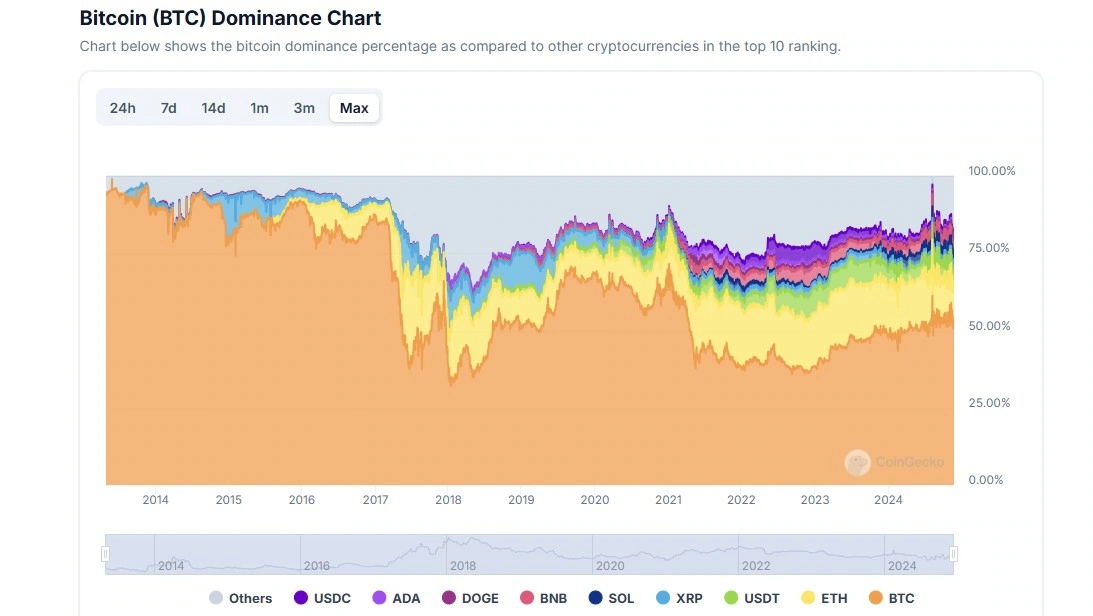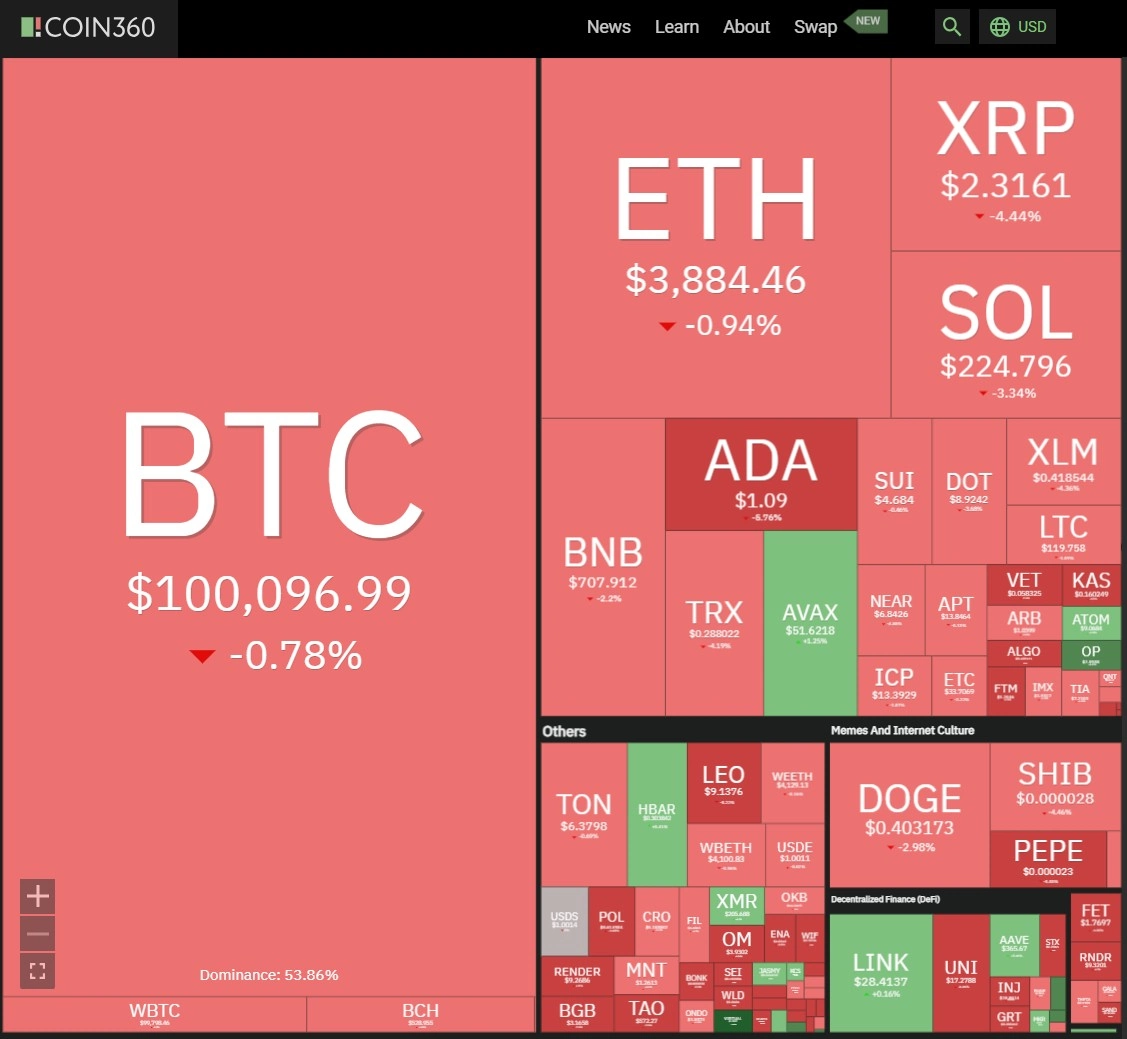Since late autumn 2021, cryptocurrency prices began to decline, and 2022 became one of the toughest periods for the crypto market, often referred to as the “Crypto Winter.”
In response to rising inflation, central banks, including the U.S. Federal Reserve, sharply increased interest rates, raising concerns about a potential recession. As borrowing costs climbed, investors pulled their funds from riskier assets, including cryptocurrencies.
The massive use of leverage in cryptocurrency markets during the 2021 rally led to a wave of investor position liquidations in 2022, contributing to the collapse of major players:
- In May 2022, Terra Luna and its algorithmic stablecoin, UST, crashed after UST lost its peg to the dollar. This triggered the collapse of the entire Terra ecosystem, wiping out over $40 billion in market capitalization.
- FTX collapse. In November 2022, leading cryptocurrency exchange FTX filed for bankruptcy due to a severe liquidity crisis and poor asset management. Investigations revealed significant mismanagement of customer funds.
- Celsius, Voyager, Three Arrows Capital, and other major players also faced serious difficulties.
What is particularly noteworthy is that, while Bitcoin dominance surged from 40% to 70% during the bear market of 2018–2019, during the “Crypto Winter” (marked by black vertical lines below), Bitcoin dominance never exceeded 50% (highlighted by the blue background).



